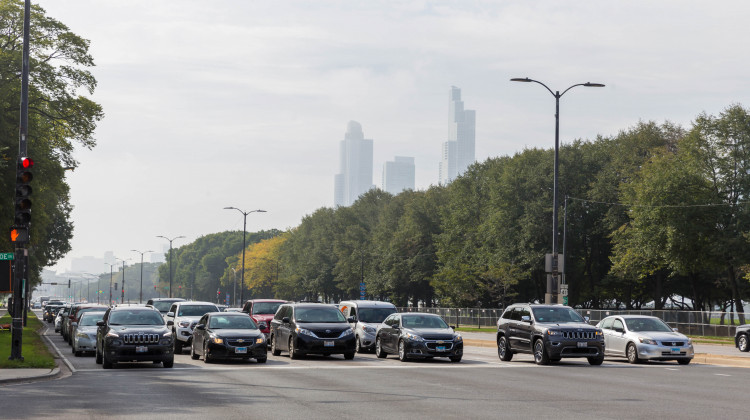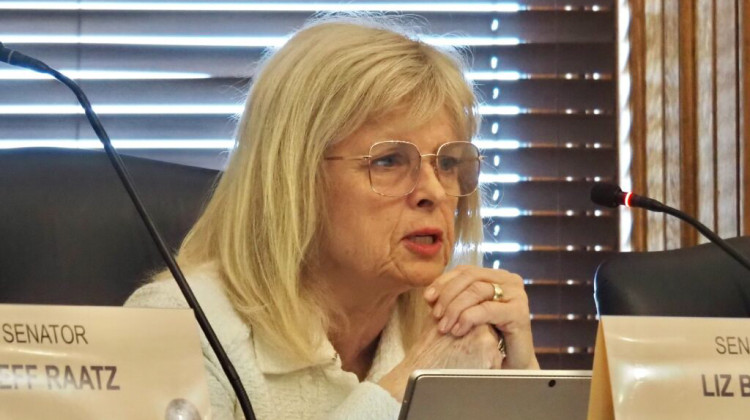
Chicago traffic at an intersection in 2019. The only four counties in Indiana that don't meet federal ozone standards are near major cities like Chicago.
Marco Verch/FlickrThe Environmental Protection Agency plans to pass on another opportunity to tighten air pollution standards. In April, the agency proposed not changing the standards for particle pollution. It announced on Monday it also doesn’t plan to tighten the standards for ozone — commonly known as smog.
Smog forms from the combination of sunlight and emissions from things like cars and industrial facilities. It can make it more difficult to breathe and aggravate lung and heart conditions.
“Based on careful reviews and the most current available scientific evidence and with consultation of our independent science advisors, EPA is proposing to retain without changes the existing ozone requirements," said EPA Administrator Andrew Wheeler.
READ MORE: Questions About Ozone Advisories? We've Got The Answers
But groups like the American Lung Association question whether the agency did use the best available science. They say there’s a lot of evidence to show that the current standards for ozone pollution don’t protect public health and should be stricter.
Janet McCabe directs Indiana University’s Environmental Resilience Institute and helped develop the current ozone standards during her time at the EPA. She says when the EPA sets these standards, it takes input from an independent advisory committee. In 2018, several members of that committee were replaced by former EPA Administrator Scott Pruitt.
“A number of people are concerned — and you will see that, you will hear that in the comments that come in — that the external peer review of this process has been — is compromised," she said.
Right now, four Indiana counties near Chicago and Louisville don’t meet the current federal standards for ozone. The EPA had hoped to declare that Porter County now meets the 2015 standards, but a recent federal court ruling said the agency needs more evidence to justify that designation.
Right now Lake, Porter, Clark, and Floyd counties don’t meet at least one federal standard for ozone.
So far this summer, the Indiana Department of Environmental Management has issued more than a dozen alerts due to high ozone levels.
Contact reporter Rebecca at rthiele@iu.edu or follow her on Twitter at @beckythiele.
Indiana Environmental reporting is supported by the Environmental Resilience Institute, an Indiana University Grand Challenge project developing Indiana-specific projections and informed responses to problems of environmental change.
 DONATE
DONATE






 Support WFYI. We can't do it without you.
Support WFYI. We can't do it without you.